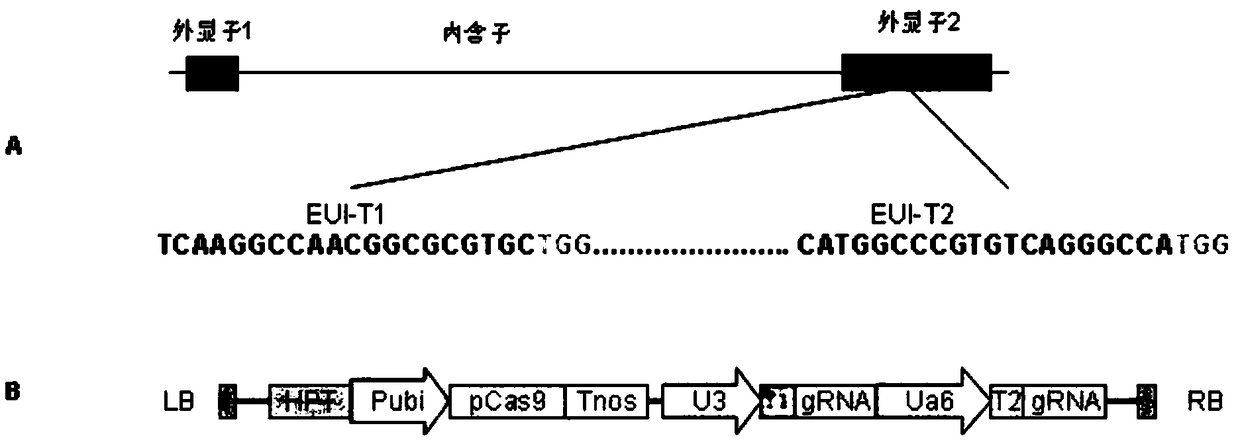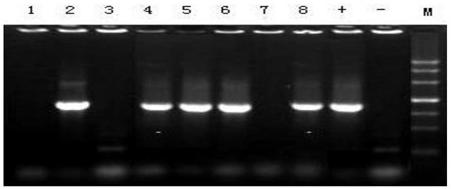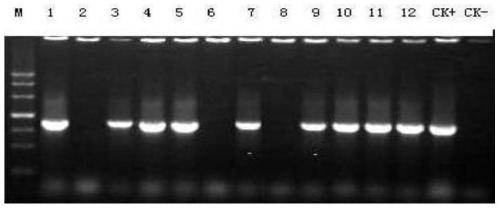Method for creating non-wrapround rice two-line sterile line with CRISPR/Cas9 technology
A cas9-eui-grna and rice technology, applied in the direction of recombinant DNA technology, botany equipment and methods, biochemical equipment and methods, to speed up the breeding process, shorten the breeding cycle, and prevent gibberellin from polluting the environment
- Summary
- Abstract
- Description
- Claims
- Application Information
AI Technical Summary
Problems solved by technology
Method used
Image
Examples
Embodiment 1
[0030] Example 1, Construction of Rice EUI Gene-directed Knockout Expression Vector Based on pYLCRISPR / Cas9 System
[0031] (1) Genomic target selection; query the EUI locus number (LOC_Os05g40384) from the National Rice Data Center (http: / / www.ricedata.cn / gene / ), click on the locus number to enter (http: / / rice.plantbiology. msu.edun / ) to query the EUI gene structure, such as figure 1 As shown in A, the gene consists of two exons and one intron, the first exon is 355bp long, the second exon is 1379bp long, and the intron is 7874bp long. Then download the CDS sequences of the indica (Oryza indica) and japonica (Oryza sativa) EUI genes from the Gramene (http: / / www.gramene.org / ) database, and select the second exon of the indica and japonica EUI genes by sequence comparison A fragment of SEQ ID NO.1 with the same nucleotide sequence, which is used to translate the 356th-1018th nucleotide sequence after the initiation codon ATG; utilize the bioinformatics website (http: / / crispr.d...
Embodiment 2
[0051] Example 2, Genetic Transformation of Rice EUI Gene Targeted Knockout pYLCRISPR / Cas9 Expression Vector
[0052] The recombinant Agrobacterium pYLCRISPR / Cas9-eui-gRNA in Example 1 was used to infect the callus induced by mature embryos of the two-line male sterile line Pei'ai 64S in rice, and the obtained rice transformed plants were named L64S respectively. The specific method of the experiment is as follows :
[0053] (1) Induction of mature embryo callus: the rice seeds are dehulled, washed with water, sterilized in 75% ethanol for 5 minutes, and then sterilized in 33% sodium hypochlorite for 30-45 minutes. Wash the seeds with sterile water to remove sodium hypochlorite until there is no obvious smell. The seeds were placed on NBD2 (2,4-D concentration of 2mgL-1) medium plate, and cultured in the dark at 260C for 10-14d. After the yellow callus grew out, the induced new callus was excised with a razor blade, cultured on a new NBD2 medium for 10 days, and then used fo...
Embodiment 3
[0058] Example 3. Detection of targeted knockout of rice EUI gene and acquisition of long panicle neck male sterile line without transgenic components
[0059] (1) Positive plant identification: Get the T0 generation plant blade that embodiment 2 obtains, use CTAB method to extract genomic DNA, and use this as template, use the specific primer Hpt-F / Hpt-R of hygromycin resistance gene Hpt Carry out PCR amplification, and the PCR product is detected by agarose gel electrophoresis to detect the hygromycin resistance gene HPT marker. The genomic DNA of the positive plants transformed in the T0 generation can amplify a specific band of 697bp, and the non-positive plants cannot amplify the target strips such as figure 2 shown.
[0060] Hpt-F (SEQ ID NO. 14): ATTTGTGTACGCCCGACAGT
[0061] Hpt-R (SEQ ID NO. 15): GTGCTTGACATTGGGGAGTT
[0062] image 3It is the Hpt PCR detection result of the T0 generation knockout strain in Example 3; wherein 1-8 represent 12 different T1 generat...
PUM
 Login to View More
Login to View More Abstract
Description
Claims
Application Information
 Login to View More
Login to View More - R&D
- Intellectual Property
- Life Sciences
- Materials
- Tech Scout
- Unparalleled Data Quality
- Higher Quality Content
- 60% Fewer Hallucinations
Browse by: Latest US Patents, China's latest patents, Technical Efficacy Thesaurus, Application Domain, Technology Topic, Popular Technical Reports.
© 2025 PatSnap. All rights reserved.Legal|Privacy policy|Modern Slavery Act Transparency Statement|Sitemap|About US| Contact US: help@patsnap.com



